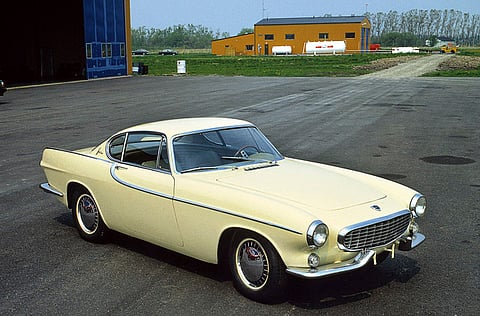1961 Volvo P1800
The 1961 P1800 revitalised Volvo’s image, from being the maker of mundane models to sprightly and elegant sportscars

What image does the name Volvo conjure up in your mind? A three-point seatbelt? Airbags? Or is it that dreary hearse-like wagon that takes people to and from the airport? It’s sadly true that the Swedish carmaker’s name has become synonymous with such mundane, albeit important, things like safety and technology rather than exciting design or driving dynamics.
Things were not very different for Volvo back in the day either, when they started churning out utterly practical and extremely reliable machines. Until one particular model injected some much-needed drama into the brand’s image.
In fact, the very reason behind the Volvo P1800’s development was to give the company’s image a shot in the arm. And what a shot it turned out to be. Volvo had dabbled with sportscars even earlier, but with disastrous results. The ill-fated P1900 Sport of 1955 was so dreadfully bad that only 67 units were made before the model was scrapped.
But Volvo’s then president Gunnar Engellau realised the importance of an exciting sportscar in the line-up to boost overall sales, and being obsessed with Italian styling, he got consultant Helmer Petterson to commission proposals from leading design houses in Italy.
It’s ironic then that the final sketch approved by the Volvo board was drawn by a 25-year-old Swede — Pelle Patterson, Helmer’s son who had just joined Pietro Frua as a junior designer. However, the design was not credited to him for a long time, as Gunnar felt cheated out of his desire to have an Italian-designed car when he came to know it was snuck in at the last minute with the original sketches from Frua. The fact remains that what the young man penned went on to be one of the world’s most attractive sports coupés.
Three prototypes were built by Frua in Turin from 1957 to 1958 on Amazon platforms, but Volvo’s inadequate production capacity meant the launch in 1961 was not as smooth as expected. British firms Pressed Steel and Jensen were subcontracted for body construction and for paint and assembly respectively. But quality issues and labour problems forced Volvo to move production to the newly expanded facility in Sweden in 1963 after 6,000 cars were built.
The elegant, flowing design of the 1800, combined with robust mechanicals and the new 1.8-litre B18 engine made sure the car became an instant success. Getting Roger Moore to drive it in the hit television series The Saint gave it cult status and helped boost sales considerably. Volvo didn’t tinker much with the winning formula over the car’s 12-year production run, with changes being limited to a displacement hike and an electronic fuel injection.
In 1971 an estate version named the 1800ES was introduced. The new version divided opinion among fans but became popular nevertheless. More than five decades since its introduction, it remains one of the most significant models in the company’s history, and still the most sought after.
Sign up for the Daily Briefing
Get the latest news and updates straight to your inbox


